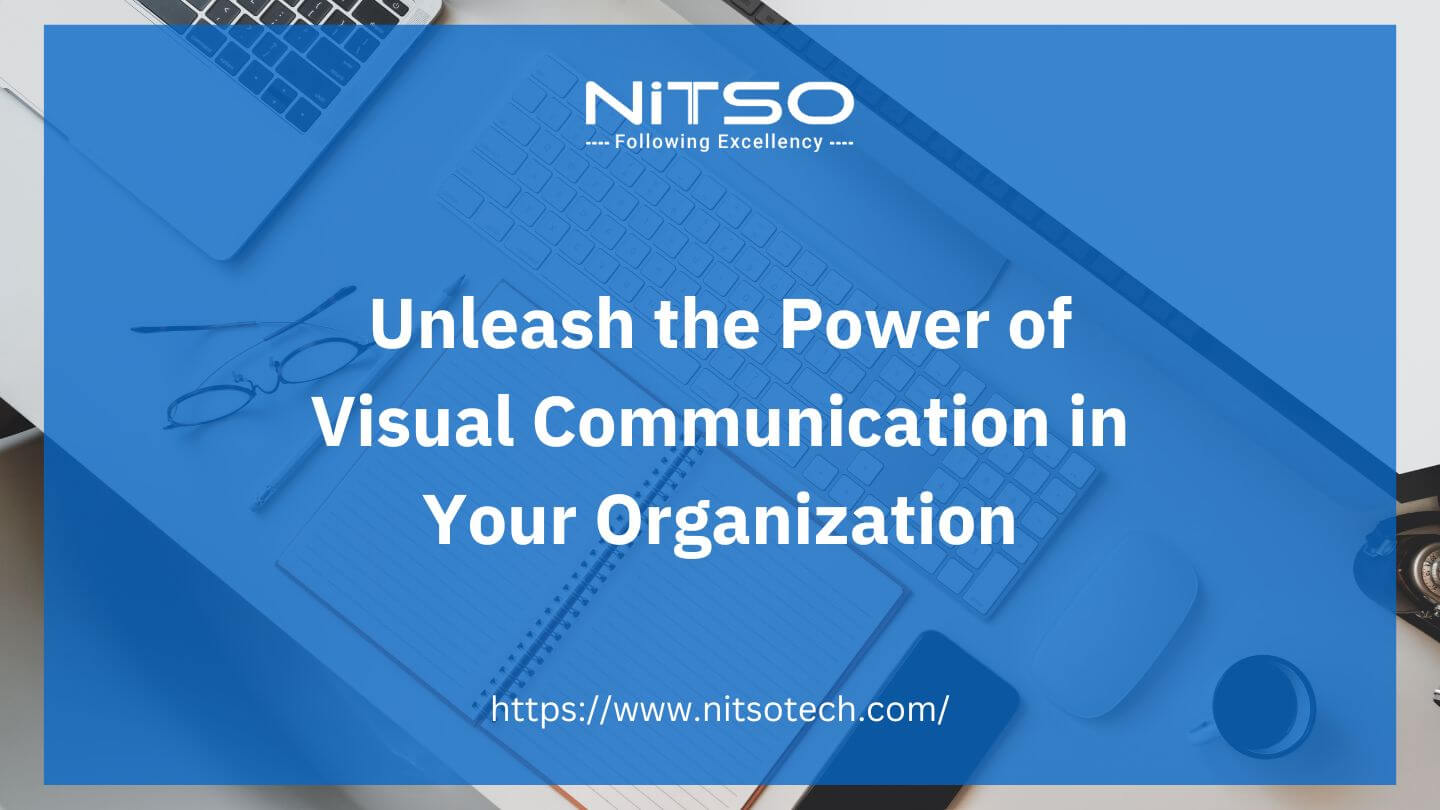In today’s fast-paced business world, effective communication is more important than ever. But conveying complex information or big ideas can often get lost in dense blocks of text. This is where visual communication comes in – the use of visual elements like images, charts, videos and more to communicate information quickly and clearly. Implementing visual communication in the workplace is a rising trend that can completely transform workflows.
In this article, we’re going to explore the different types of visual communication and their business applications. We’ll discuss the science behind why visual representation is effective and efficient for audience comprehension. You’ll learn proven ways visual communication can overhaul workflows to boost productivity, collaboration, and innovation. Tips and tools will be provided to help you implement visual communication systematically in your workplace.
Table of Contents
What is Visual Communication?
Visual communication refers to conveying information, data, and meaning through visual elements. It involves representing ideas, emotions, and messages through images, graphics, colours, shapes, typography, and other visual media.
Unlike verbal or written communication, visual communication allows us to communicate concepts quickly and universally through visuals that people can rapidly process and understand.
We are surrounded by visual communication in our daily lives and some key examples of visual communication include infographics, presentations, signs, maps, emojis, diagrams, and more.
7 Types of Visual Communication
It contains a wide variety of media and formats. When people think of visual communication, things like presentations, infographics, and videos may initially come to mind. But there are actually many diverse categories that qualify as visual representations. Each format serves different communication purposes and contexts. Understanding the top types of visual communication and their uses will expand your ability to leverage visuals effectively. Let’s explore some of the most common and impactful forms of visual communication used in business and workplace settings.
- Infographics – Visual representations of data, statistics, information, processes, etc. using charts, graphs, maps, and other graphics. Help convey complex information quickly.
- Presentations – Slide decks containing minimal text and more engaging charts, images, and visuals. Help present ideas or data to audiences.
- Signage – Visual signs, warnings, or wayfinding methods using images, symbols, and icons instead of words. Help guide or direct behaviour.
- Videos – Motion graphics, typography, animations, etc. to demonstrate processes, tell stories, or explain concepts. Help engage and connect with audiences.
- Photography – Images that convey stories, messages, ideas, or emotions. Help establish branding and marketing.
- Illustrations – Hand-drawn or computer-generated images that visualize ideas and concepts. Help explain and teach.
- Infographics – Typography, colours, shapes, and layouts are carefully designed to communicate. Help form branding and recognition.
Importance of Visual Communication
It is not just a nice addition – it’s critically important for business effectiveness. There are several science-backed reasons why our brains respond so well to visual information. Let’s explore some of the key reasons why visuals are a powerful way to communicate:
- Faster processing of information – Research shows our brain processes visuals 60,000 times faster than text. This enables rapid comprehension of concepts, data, and ideas.
- Improve retention and recall – Visual cues and associations help cement information in long-term memory and make recall easier. Our brains remember visuals better.
- Transcend language barriers – Pictures, graphics, and symbols are universal languages that can be understood globally.
- Drives engagement – Seeing information and connections keeps audiences more alert, focused and involved.
- Simplify complexity – Charts, diagrams and infographics turn complex concepts, processes and data into easily digestible formats.
- Boosts creativity – Visualizing ideas opens neural pathways that lead to creative problem-solving and new perspectives.
- Visuals evoke emotion – Images, colours, and design elicit emotional and empathetic responses that resonate rationally with people.
In essence, it leverages our innate visual perception strengths and emotional wiring to convey meaning rapidly and profoundly. Implementing visual communication strategically can thus optimize understanding, collaboration, innovation, and workflows.
How Visuals Improve Workflows?
Implementing visual communication in the workplace can optimize workflows and productivity in multiple ways:
1. Streamline Processes
Visuals like flowcharts, process diagrams, and step-by-step infographics can simplify and communicate complex systems and processes efficiently. Visualizing workflows enhances understanding across teams and ensures alignment.
2. Boost Collaboration
Shared visual frameworks create common ground and ensure all collaborators are on the same page. Real-time visual collaboration tools allow remote teams to ideate and iterate seamlessly.
3. Enhance Project Management
Visual project management techniques like Gantt charts, Kanban boards, and timeline infographics provide transparency. They enable at-a-glance monitoring and communication of schedules and progress.
4. Improve Presentations
Presentations with visual slides, minimal text, relevant graphics, and visual storytelling techniques engage audiences and improve recall. Meetings become more productive and improve work performance.
5. Strengthen Brand Recognition
Cohesive visual branding and style guides create consistent visual language across mediums. This reinforces brand recognition and credibility with audiences.
6. Aid Learning & Development
Visual learning aids like presentations, videos, flowcharts and infographics help train and upskill employees faster with improved comprehension and retention.
7. Make Memorable Invitations
Well-designed visual invitations encourage higher engagement and participation in company events and celebrations. This can be easily done using an online invitation maker. Thoughtful visual communication in invitations also reinforces branding and conveys professionalism.
In summary, targeted visual communication optimizes team collaboration, brand image, project and process efficiency, and learning for an organization.
Article you might be intrested in: The Top 10 Productivity Tools for Working Smarter, Not Harder in 2023
Tips for Implementation
Implementing visual communication broadly in the workplace involves strategy and planning. There are several best practices to incorporate for effectively maximizing visuals across teams, systems, and processes. Let’s go over some top tips for rolling out visual communication systematically in your organization:
- Do an audit – Assess areas that need more visuals or have ineffective visuals. Identify problems visuals can solve.
- Set objectives – Define specific goals and metrics for success aligned to strategy.
- Know your audience – Understand audience communication needs and visual literacy.
- Start small – Pilot visual projects with one team/process first. Iterate and expand organically.
- Lead by example – Executives using visual tools signals this is a priority.
- Build templates – Create reusable visual design systems and templates for consistency.
- Use top tools – Provide access to quality visual creation and collaboration tools.
- Coach skills – Train employees on visual thinking skills and tools.
- Recognize champions – Celebrate early adopters using visuals effectively.
- Gather feedback – Survey both internal and external audiences on visual communication.
- Continually optimize – Refine approaches based on usage metrics and audience input.
Strategically implementing visual representations across an organization takes planning, support, and iteration. Following structured best practices ensures visuals are adopted and used effectively over the long term.
Tools for Visual Communication
The right tools are key to creating visual content efficiently. Here are some top tools to empower visual communication of various types in your workplace:
- Presentations – PowerPoint, Google Slides, Visme, Canva.
- Infographics – Piktochart, Venngage, Canva, Visme.
- Graphs/Charts – Excel, Venngage, Piktochart.
- Signage – Canva, Crello, Adobe Illustrator.
- Videos – Animaker, Powtoon, Adobe Premiere.
- Photography – Adobe Lightroom, Canva Photos.
- Design – Adobe Creative Suite, Figma, Canva.
Article you might be intrested in: 10 Must-Have Tools and Apps for Seamless Virtual Collaboration
Wrapping Up
Visual communication is clearly much more than just aesthetics – it’s a vital strategic tool to improve productivity, collaboration, and workflows across organizations.
With the rise of remote and dispersed teams, it is becoming even more critical. The key is strategically leveraging the right visuals for your communication goals and audience needs. Don’t overcomplicate visuals but instead simplify and clarify messaging.
Implementing visual communication requires strategy and the right tools. But the payoff can be immense in terms of more clarity, engagement, and alignment across your organization. Leverage visuals wisely to see workflow transformation.
Communication is at the heart of business success. Unlock the power of visual representations for faster understanding, innovation and lasting impact. Let visuals work for you!








0 Comments